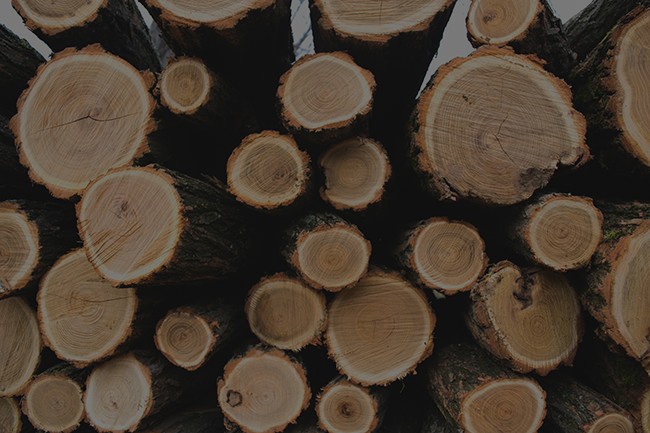The average person spends one third of their life sleeping. That’s 33% of your life in blissful slumber. This essentially means you’re spending a significant portion of your life in bed, which means having the right bed isn’t something that should be ignored or downplayed.
We’ve all been shopping for a bed frame or two in our lives, but have you ever considered building your own? Building your own bed frame is actually quite common and surprisingly easy. It’s so common that the Plyco team has created its own guide on how to choose the best plywood for building your own bed frame.
Plywood bed frame thickness
If you’ve read our blog post on selecting the right plywood for building a desk you’ll know we recommended 19mm plywood, with some variance depending on the overall size of your project. Here we have a much harder and definitive recommendation.
19mm plywood sheets are the absolute bare minimum you should be looking at using when it comes to building a bed frame. It goes without saying that bed frame has to be built to last. Not only that, but it also needs to be able to support the weight of multiple people with relative ease, which isn’t an easy task for certain materials!
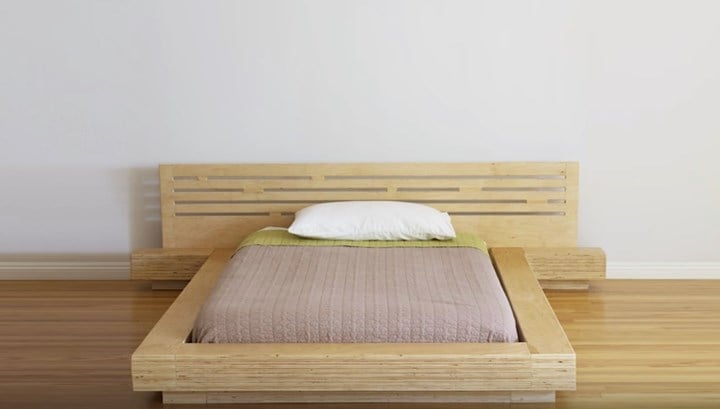
When planning your bed frame project you’ll need to take into account the weight of the mattress you’ll be using as well as how many people will be sleeping in it. Naturally, as you increase the weight of the things it will be supporting, the thickness of the plywood will need to increase. Thankfully, our sheets come in 30mm thickness almost universally across the board, with our Bamboo even stretching out to 40mm.
The perfect plywood
Now that you’ve decided on the required thickness to ensure the sturdiness of your brand new bed frame, it’s time to pick the type of plywood you’ll be using.
The general rule for DIY bed frame and bed base building is to go for anything with a Birch Plywood core. Having the natural qualities of Birch at the heart of whatever you purchase will give you confidence that what you’ve built is built to last. Other common cores are MDF and Particle Board, but these are far from suitable for this type of project.
We’re also going to assume you want a bed that looks great too. For this reason, we most often suggest many of our products that furniture makers utilise. The types of plywood used for shopfitting and cabinetmaking require the exact same properties needed for a DIY plywood bed base more often than not.
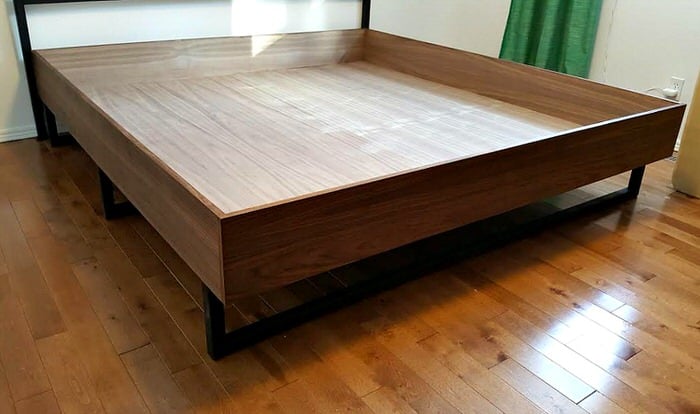
Our first suggestion is to choose from our range of Veneered Birch Plywood. This is the most affordably entry point and also provides a lot of flexibility in appearance. At Plyco we keep 12 stock veneers for you to choose from. However, if you’ve found a specific veneer that you’re particularly excited about, Plyco will source it just for you — as long as it’s commercially available of course!
A similar, but slightly different option is to use a product from our Strataply range. These products have been specifically tailored to meet the needs of furniture making, giving it the physical and visual qualities designers and builders desire.
Strataply is made exclusively at Plyco and allows you to press one of 13 different natural timber veneers on both sides of a Birch Plywood core. Our Veneered Plywood offers just a single “A-grade” side, so if you desire all sides to look uniform this is the ply for you.
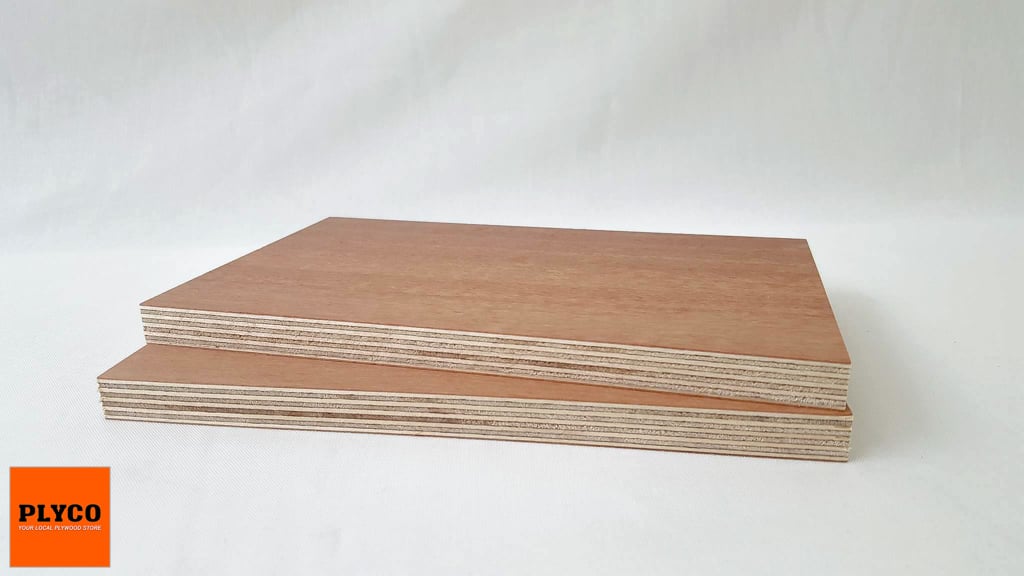
Plyco's Jarrah Strataply
Our final recommendation for plywood bed frame building is Decoply. This is a bit of an outsider choice, mostly because customers usually want a natural timber finish for an application like this. While a natural timber look is the most popular, a coloured high-pressure laminate can still work for a plywood bed frame design.
The best part about Decoply is that it’s available in so many different colours! There are 10 unique solid colours to choose from, covering almost every colour of the rainbow while also giving you choices for different shades of black and white. Gone are the days of having to paint your wood. No matter the colour palette of the room, there’s a Decoply colour to perfectly suit it.
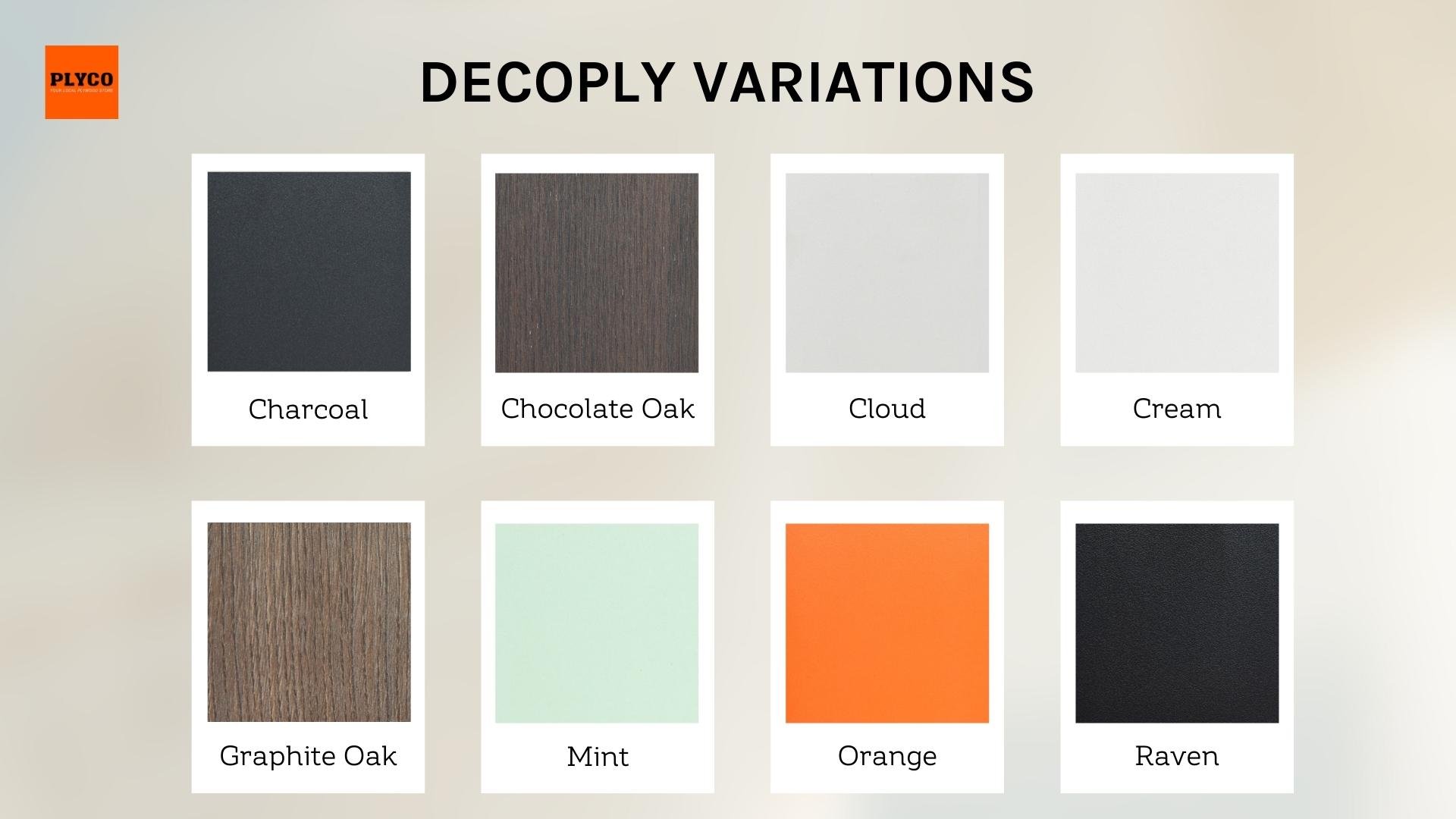
Plyco's range of Decoply colours.
Read the fine print
There are far more moving parts than meets the eye when it comes to building a bed frame or bed base, and one of those parts involves having to read the fine print.
Before you set out to build your stunning new bed read through the details of your mattress. There are examples where the warranty on some mattresses will be void when used with a plywood base/frame.
The designs of some mattresses may not work well with plywood, not allowing it to breathe properly and causing issues with moisture. It can also cause the mattress to wear down quicker than usual. We recommend doing plenty of research before purchasing your plywood to make sure the mattress you’re considering using is going to be compatible. Nothing is more frustrating than putting together some amazing plans, only to find out your mattress and plywood are incompatible.
While there are some potential risks of plywood bed bases, there are also many positives. The biggest positive is that, for mattresses that work well with plywood, the ply can actually prolong the life of your mattress. A brand new mattress can cost you an arm and a leg, so building a bed frame with plywood that will cause you to not have to buy a new one anytime soon sounds like a win-win to us.
Additionally, the density and solidity of plywood adds extra firmness to your mattress. For those of you who like a firmer mattress, this is a common solution. We’ve also found that many people suffering from health issues related to their back often choose plywood as the solution to getting a peaceful night’s sleep.
Now you know what the best plywood for a bed is, it’s time to start exploring. Head over to Plyco’s online store where you can shop for any of the products mentioned in this blog post. With our Australia-wide shipping we’re able to service your needs no matter where you are.


.svg)

.png)
.png)






